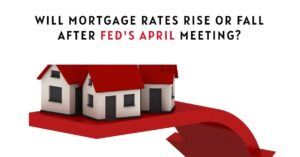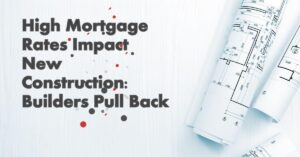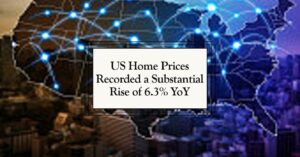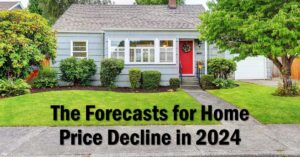For prospective homeowners and those looking to refinance, the latest news on mortgage rates may not be the most reassuring. As of April 17, 2024, rates on 30-year mortgages have experienced a significant surge, reaching their most expensive level since late November. This sudden increase has caught the attention of both industry experts and potential buyers alike.
Current Mortgage Rate Trends
Over the past week, 30-year mortgage rates have risen by almost half a percentage point, settling at an average of 7.65%. This uptick follows a series of consecutive increases, with rates climbing steadily since the previous Tuesday. This upward trajectory has pushed rates to levels not seen since late November, prompting concerns among consumers.
These figures represent national averages based on data collected from over 200 leading lenders across the country. The calculations are based on a loan-to-value ratio (LTV) of 80% and a FICO credit score ranging from 700 to 760, with no mortgage points involved.
Overview of Mortgage Rate Averages
Here's a breakdown of the current averages for various mortgage types:
- 30-Year Fixed: 7.65% for new purchases, 8.05% for refinancing
- FHA 30-Year Fixed: 7.48% for new purchases, 7.77% for refinancing
- Jumbo 30-Year Fixed: 7.20% for both new purchases and refinancing
- 15-Year Fixed: 7.00% for new purchases, 7.32% for refinancing
- 5/6 ARM: 7.89% for new purchases, 7.97% for refinancing
Analysis of Rate Fluctuations
The recent surge in 30-year mortgage rates reflects a broader trend observed over the past several days. Rates have increased by 45 basis points since the previous Tuesday, marking a significant departure from the more affordable rates witnessed in early February. While current rates remain below the historic peak observed in October, they have climbed notably from the lows experienced earlier this year.
Similarly, 15-year fixed-rate mortgages have also seen an upward trajectory, with rates reaching 7.00%, the highest level in over five months. Despite this increase, rates remain below the peaks recorded in the fall of the previous year.
Notably, jumbo 30-year rates have remained relatively stable in recent days, holding steady at 7.20%. However, this figure represents a notable increase compared to earlier in the year, signaling potential challenges for buyers in the high-end market segment.
Impact on Refinancing
Refinancing rates have also experienced upward pressure in recent days, with notable increases observed across various loan categories. The widening gap between 30-year new purchase and refinancing rates underscores the evolving dynamics of the mortgage market.
State-Level Variations
It's important to note that mortgage rates can vary significantly depending on the state of origin. Factors such as credit score distribution, average loan size, and regional market dynamics can influence the prevailing rates in each state. As such, consumers should be mindful of these variations when exploring mortgage options.
Regional Disparities on Mortgage Rates
According to recent data, states such as Mississippi, Louisiana, and Rhode Island offer some of the most favorable rates for 30-year new purchase mortgages. Conversely, states like Minnesota, Oregon, and Tennessee have reported higher-than-average rates, reflecting regional disparities in the mortgage market.
Key Factors Influencing Mortgage Rates
Several key factors contribute to the fluctuations observed in mortgage rates:
- Bond Market Trends: The level and direction of the bond market, particularly 10-year Treasury yields, exert significant influence on mortgage rates. Bond yields serve as a benchmark for lenders, affecting the cost of borrowing for both consumers and financial institutions.
- Federal Reserve Policy: The monetary policy decisions of the Federal Reserve play a pivotal role in shaping mortgage rates. Of particular importance is the Fed's approach to bond buying and its impact on funding government-backed mortgages. Changes in these policies can have ripple effects throughout the mortgage market.
- Competition Among Lenders: Competition among mortgage lenders, as well as across different loan types, can impact the prevailing rates offered to borrowers. Lenders may adjust their rates in response to market dynamics and competitive pressures, influencing the overall borrowing environment.
Given the interplay of these factors, pinpointing the exact cause of a rate change can be challenging, as fluctuations often result from a combination of multiple variables.
Recent Trends and Policy Shifts
The trajectory of mortgage rates in recent years has been shaped by a series of policy shifts and macroeconomic developments:
- Bond Buying Policies: Throughout much of 2021, the Federal Reserve engaged in significant bond purchases in response to economic pressures stemming from the pandemic. These purchases exerted downward pressure on mortgage rates, keeping borrowing costs relatively low.
- Tapering of Bond Purchases: Starting in November 2021, the Fed initiated a gradual reduction in its bond purchases, ultimately reaching net zero in March 2022. This tapering process marked a significant shift in monetary policy, impacting the trajectory of mortgage rates.
- Interest Rate Increases: Between November 2021 and July 2023, the Federal Reserve implemented a series of interest rate hikes in response to rising inflation levels. While the federal funds rate—controlled by the Fed—does not directly dictate mortgage rates, it can indirectly influence borrowing costs. The aggressive rate hikes during this period contributed to a notable upward pressure on mortgage rates.
- Future Rate Outlook: Looking ahead, the Federal Reserve has signaled a potential shift in its policy stance, with expectations of rate reductions in 2024. The Fed's “dot plot” forecast, which aggregates the expectations of its committee members, indicates a median expectation of three rate decreases totaling 0.75 percentage points by the end of the year.
As mortgage rates reach their highest levels since November, prospective buyers and refinancers must navigate these challenging conditions with careful consideration. While rates remain below historic peaks, the recent surge underscores the volatility inherent in the real estate market. As consumers evaluate their options, staying informed about rate trends and regional variations is essential for making informed decisions.
ALSO READ:













